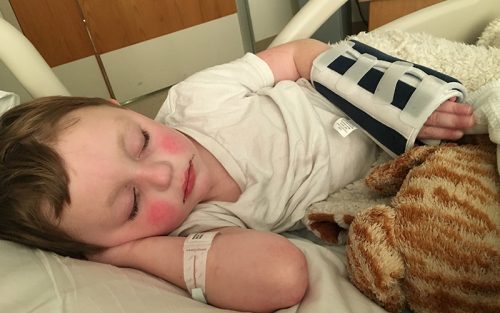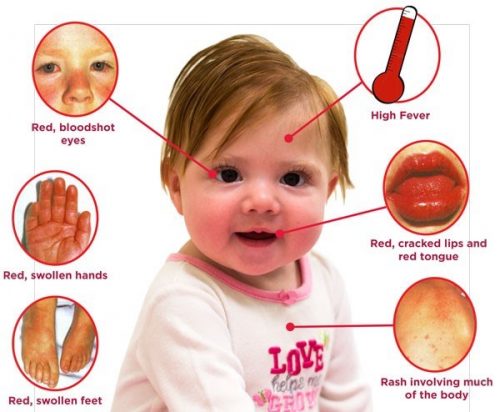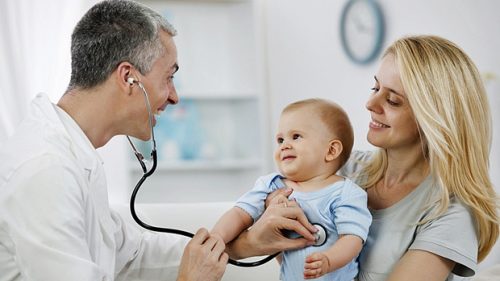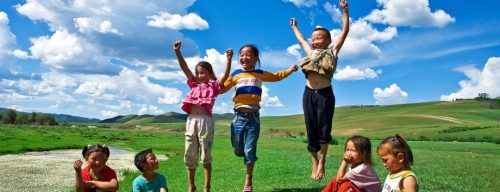
Source: thriving.childrenshospital.org
Kawasaki Disease is commonly considered as one kind of autoimmune disorder prevalent among children. Uncommonly known as mucocutaneous lymph node syndrome, this disease occurs when one’s body attacks its own blood vessels causing swelling, and in severe cases, cardiac attacks.
Children under 3 to 5 years old are commonly diagnosed with Kawasaki Disease. However, the risk is sometimes stretched up to 13-15 years of age or maybe apparent to children as young as 1-2 years old.
Kawasaki’s Effect
This particular disease, if left untreated, can lead to various heart problems which may include heart attack or vasculitis, an inflammation of the blood vessels. Further, Kawasaki Disease may even cause death if not immediately treated. Kawasaki disease is usually challenging to diagnose since several tests are needed to come up with this diagnosis.
Signs And Symptoms

Source: childrenscolorado.org
Children having Kawasaki Disease are regarded to have some of these symptoms:
- Fever
Parents always overlook this. A child who has Kawasaki Disease often has a fever accompanied by swollen lymph nodes. Despite the accompanying signs, parents tend to give the child medicine to get rid of the fever.
The symptoms of acute inflammation, including swelling and redness, fever and chills, pain and stiffness, and fatigue, are signs the body’s immune system is in “fight mode,” working hard to neutralize a threat. — Michael J Breus Ph.D.
- Swollen Hands And Toes
The swelling of one’s hands and toes is not healthy for a child. It sometimes worsens up to the point of color-changing of the toes and peeling of the skin. Hence, it is strongly advisable to seek treatment after observing this particular symptom.
- Rashes
This symptom is almost common to all diseases. Rashes are usually treated with powder or lotion. However, rashes in children with Kawasaki disease occurs dominantly in the child’s body, commonly on his tummy, chest, or even on the genitals. There are times wherein a child’s eyes become reddish too.
- Strawberry Tongue
It may sound pretty, but it is not. This occurs when your child’s tongue becomes swollen and white bumps cover it. Swollen, dry and cracked lips usually accompany this symptom.
Having a strawberry tongue is very painful for the child. It requires the parent to exercise maximum tolerance in dealing with this disease.
- Diarrhea, Vomiting, And Other Complications
Kawasaki Disease is also observed to cause vomiting or diarrhea, and severe pain that may be felt in joints and abdominal area.
In ways unknown to the teachers who mentored the practitioners of today, diet and exercise, community, environment, and mind are inextricably woven together. Problems in one area often manifest in other areas. — Odelya Gertel Kraybill Ph.D.
Kawasaki’s Treatment

Source: cbc.ca
A child diagnosed with Kawasaki Disease should be treated immediately. However, the treatment is costly. Doctors frequently prescribe procedures through IV (Intravenous) doses of gamma globulin. These doses are purified antibodies that block and prevent further infections.
Further, doctors need to check the child’s heart rate simultaneously. To avoid heart attacks and other cardiac problems, physicians usually prescribe a high dose of aspirin. Aside from that, children are encouraged to have their annual flu vaccination to prevent any other complications.
Because mindfulness can promote skills that are controlled in the prefrontal cortex of the brain, like the ability to focus and concentrate, it is especially useful for children. According to Bobby Azarian, author of The Mindful Child, “Fundamental principles of neuroscience suggest that meditation can have its greatest impact on cognition when the brain is in its earliest stages of development.” — Marilyn Wedge Ph.D.
The cause of Kawasaki Disease is still unknown. After acquiring this disease, the safety of the children is not absolute. That is why, as a parent, one should be aware and alert of the symptoms at all times. Do not risk your child’s safety and treat every symptom with caution and advice from a physician.
